


Product Marketing Manager at Serpstat
1/3 of Bing users are from the US, so why not target both Google and Bing? Use the new Bing research search database to analyze websites and 10M keywords in the USA.
It’s time to reevaluate and refine your SEO strategy — cover a wider audience to reach more potential customers with Bing SEO.
Who Are Bing Users?
As for December 2023, Bing gets 1.255B monthly visits.
Although Google gets the most market share, Bing is the second-most popular search engine globally.
Source: Similarweb
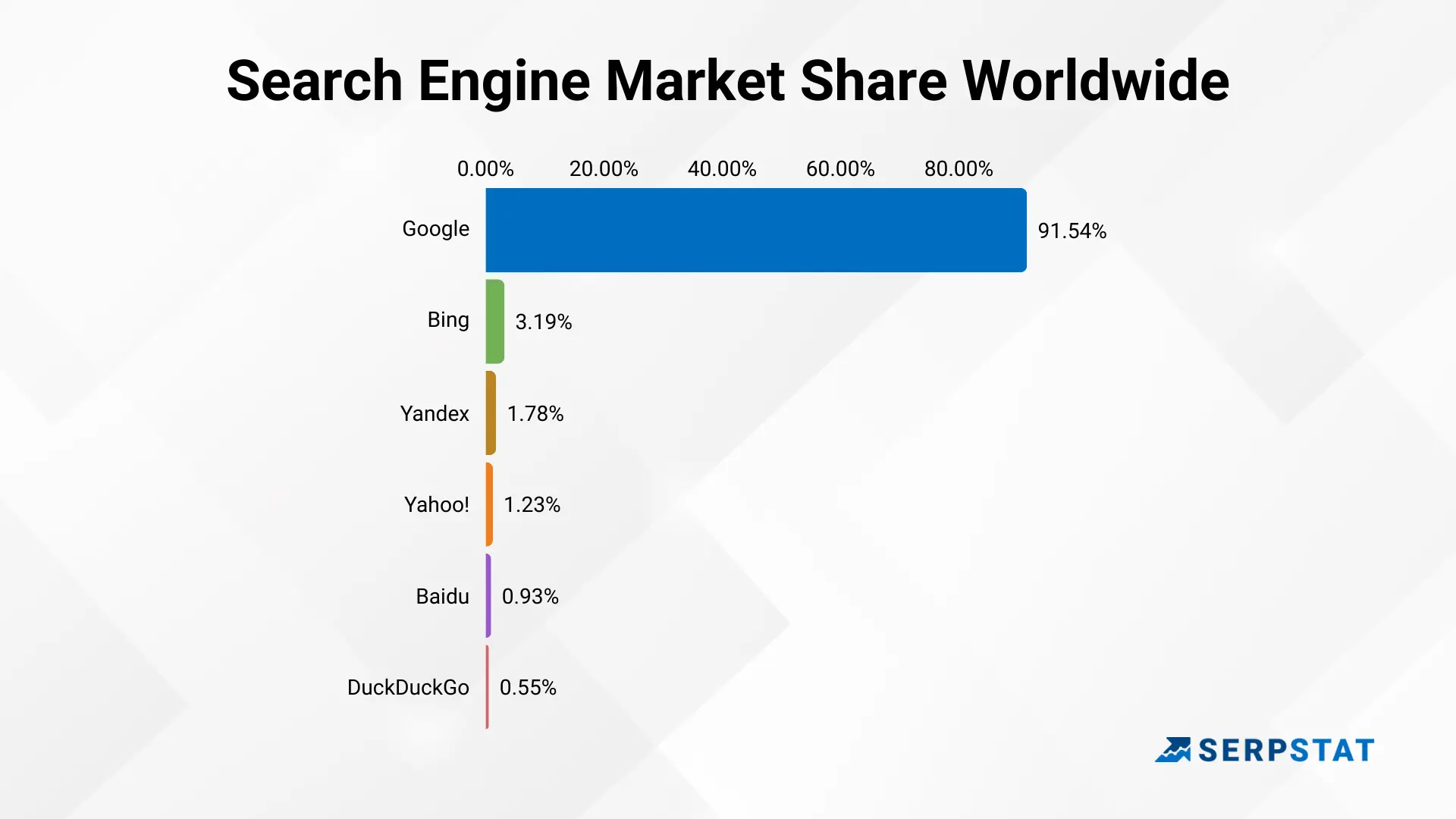
1/3 Bing visits come from the US:
Source: Similarweb

Bing’s user demographic is the following, according to Microsoft Search Network data.
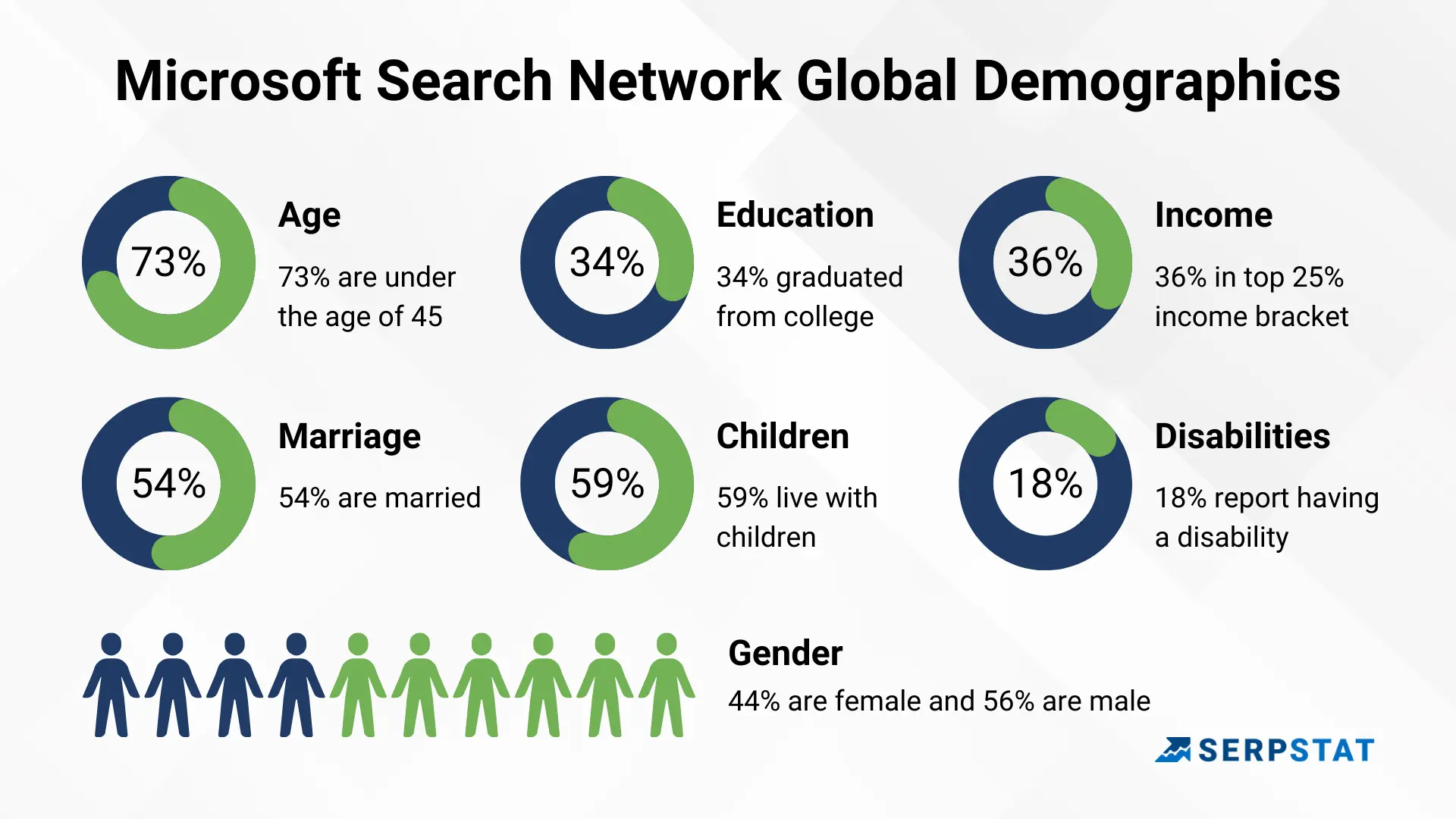
Bing has 686 million unique PC users that make 13.9 billion PC searches per month.
What Bing users search for the most are other products and services.
According to our database, the top 10 Bing searches in the US are:
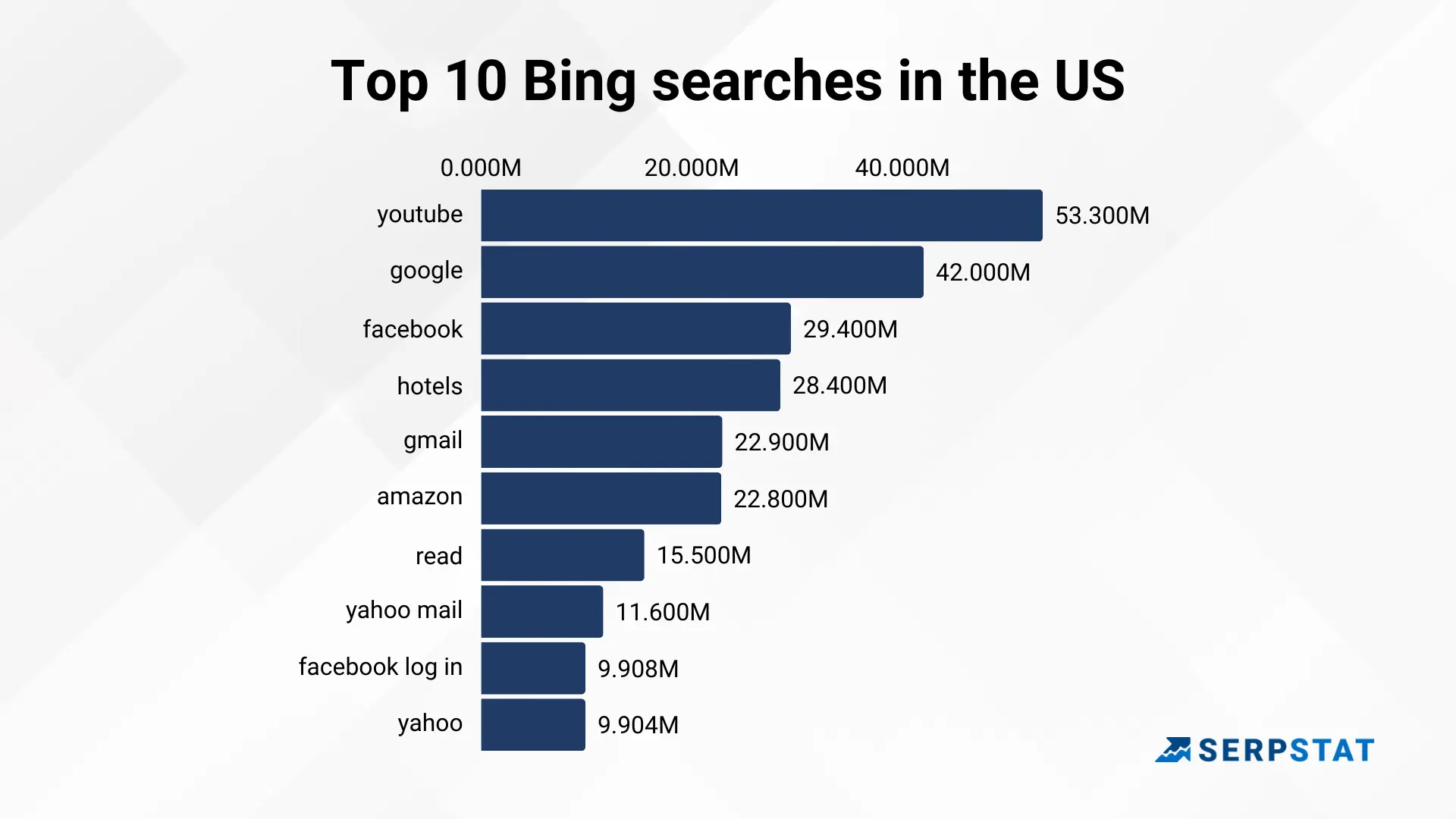
Knowing the Bing user demographics, it’s easier to understand if its audience is a target for your business. If it is, then you might miss out on a traffic share by neglecting the Bing SEO.
Start expanding business worldwide now
Analyze Bing SERPs and keywords for the first 7 days for free. Discover business opportunities and competition to refine your SEO and PPC strategy.
Cancel any time.
Sign up
SEO and PPC Research in Bing
Our newly released Bing search database for the US search region contains 10M keywords. It’s available in all Search Analytics reports (Domain analysis, URL analysis, Keyword research), except Market research, Search suggestions and questions.
The keyword database will be expanded, but for now, it’s a good chance to start SEO in Bing and expand your business with a new search engine.
Research domains and URLs to analyze the following:
- Visibility
- Organic traffic
- Top performing pages
- Keyword distribution by position
- Missing keywords
- Competitors in organic and paid search
- Ads and landing pages
As there are 10M keywords for a start, some metrics can be unavailable for some domains.

Within a Bing keyword research, analyze the following:
- Search volume
- Competition in PPC, %
- CPC
- Top performing pages in SERP
- Competitors in organic and paid search
- Ads and landing pages examples
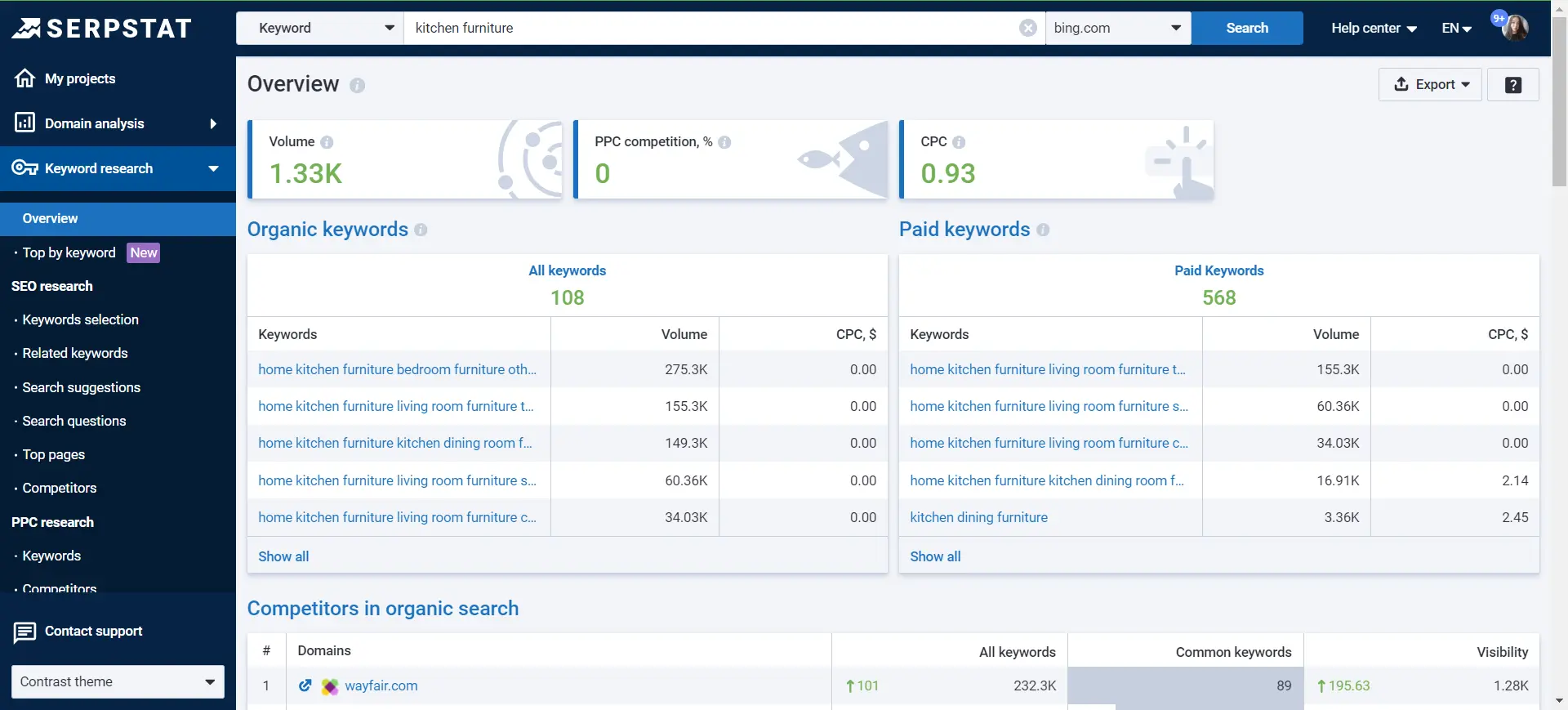
Why It’s Beneficial to Focus on Both Google and Bing
-
Broaden your audience and cater to diverse demographics
Google and Bing are the most widely used search engines. Some people like one, while others prefer the other. Capture all segments, considering factors such as age, gender, location, and interests, to drive online traffic to your website.
-
Optimize for different algorithms
Google and Bing use different algorithms to determine search rankings. If you’re not succeeding in Google, your rankings may be high in Bing at the same time. Adapt to the unique ranking factors of each search engine, maximizing your chances of achieving high rankings across various search queries.
-
Consider market share
Depending on your target audience and geographic location, the market share of Google and Bing may vary. For example, ⅓ of Bing users are from the United States. Consider the preferences of your audience to optimize for the search engine they are more likely to use.
-
Take advantage of lower competition
Google Ads is highly competitive, and the cost per click for popular keywords can be quite high. Microsoft Ads, on the other hand, may offer lower CPCs for similar keywords. This can be advantageous for businesses looking to optimize their advertising budget. Use Bing keyword research tools to research average CPCs for your target keywords.
-
Explore geo-targeting options
Both Google Ads and Microsoft Ads offer geo-targeting options, allowing you to tailor your ads to specific locations. This can be beneficial for businesses that have regional or local target markets. Perform Bing keyword research to find keywords for local optimization.
-
Keep your branding consistent
A consistent online presence across both Google and Bing helps reinforce your brand. Users who switch between the two search engines should encounter a cohesive brand image and messaging. Don’t neglect Bing SEO optimization to spread the same brand positioning across platforms.
What are Bing Ranking Factors?
Unlike Google, Bing is more open about its ranking factors. Therefore, ranking on Bing may be somewhat easier, depending on your industry and the competition level in it.
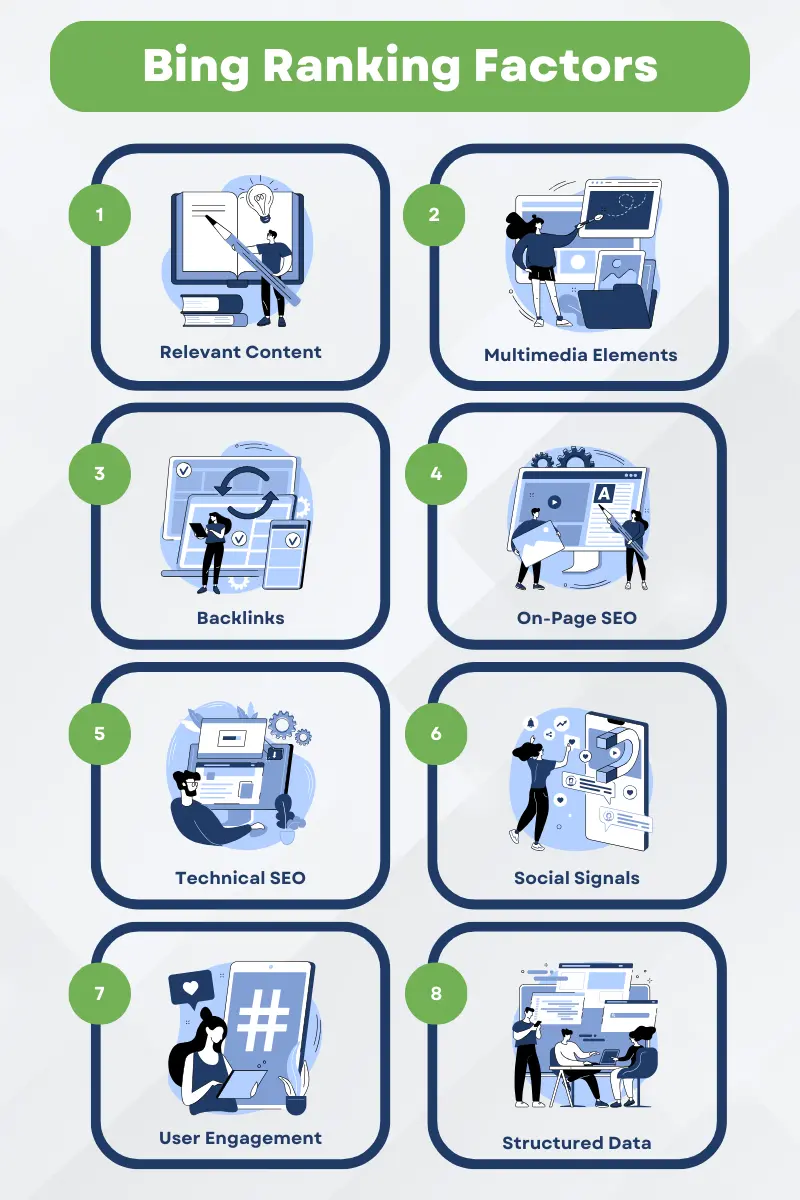
-
Relevant Content
Create content that is rich, engaging, relevant, and easy to navigate. This is one of the most important ranking factors. Relevant content means that the information on your webpage directly addresses the user’s query, providing helpful and informative content.
-
Multimedia Elements
Ensure that multimedia elements are of high quality, unique, original, and relevant to the content. Don’t forget to add alt tag descriptions. These elements not only make your content more engaging but also contribute to a more comprehensive understanding of the topic.
-
Backlinks
Focus on earning quality backlinks through content creation, outreach, and partnerships. High-quality backlinks from authoritative and relevant sources, as a ranking factor, have a positive influence. Avoid low-quality or spammy backlinks, as they can have a negative impact on your site’s reputation.
-
On-Page SEO
Use relevant keywords in title tags and meta descriptions. Create a clear and hierarchical structure for content using header tags. Ensure that on-page elements accurately reflect the content of the page so Bing algorithms rank your website higher.
-
Technical SEO
Optimize page load speed, ensure mobile responsiveness, and create an easily navigable site structure. Use proper HTML markup and XML sitemaps to facilitate search engine crawlers.
-
Social Signals
Maintain an active and engaged presence on social media. Encourage social sharing of your content — this includes likes, shares, and comments on platforms like Facebook and Twitter. Ensure that your website integrates with social media platforms to cover this SEO ranking factor.
-
User Engagement
Monitor user engagement metrics and make improvements based on user behavior. User engagement metrics, such as click-through rate (CTR), bounce rate, and time spent on a page, provide insights into how users interact with your content. Search engines may use these metrics to gauge the relevance and quality of your content.
-
Structured Data Markup
Use markup specifications to provide additional context about your content to search engines. Bing uses structured data to enhance the display of search results.
Show up for even more customers
Tap into the Bing audience to expand your market share across another search engine. Perform a SERP, keyword and competitor analysis and start your Bing SEO strategy.
Cancel any time.
Sign up
FAQ
Bing was created by Microsoft and was officially launched on June 3, 2009.
As of December 2023, Bing’s global market share is 3.19%.
Most of the traffic Bing gets from the USA (30.68%) and China (24.48%).
Bing offers an online advertisement service called Microsoft Ads (Bing Ads). For some keywords, the competition is lower than on Google, so you may advertise for a lower CPC.
Bing Keyword Research tool contains 10M keywords for the US search region. Simply enter a domain name, a URL address, or a keyword into the search bar, choose a search engine, and click “Search”. You can analyze domains, URLs, and keywords by Visibility, Traffic, Search volume, CPC, and Competition % with the tool.
Found an error? Select it and press Ctrl + Enter to tell us
Don’t you have time to follow the news? No worries! Our editor will choose articles that will definitely help you with your work. Join our cozy community 🙂
By clicking the button, you agree to our privacy policy.

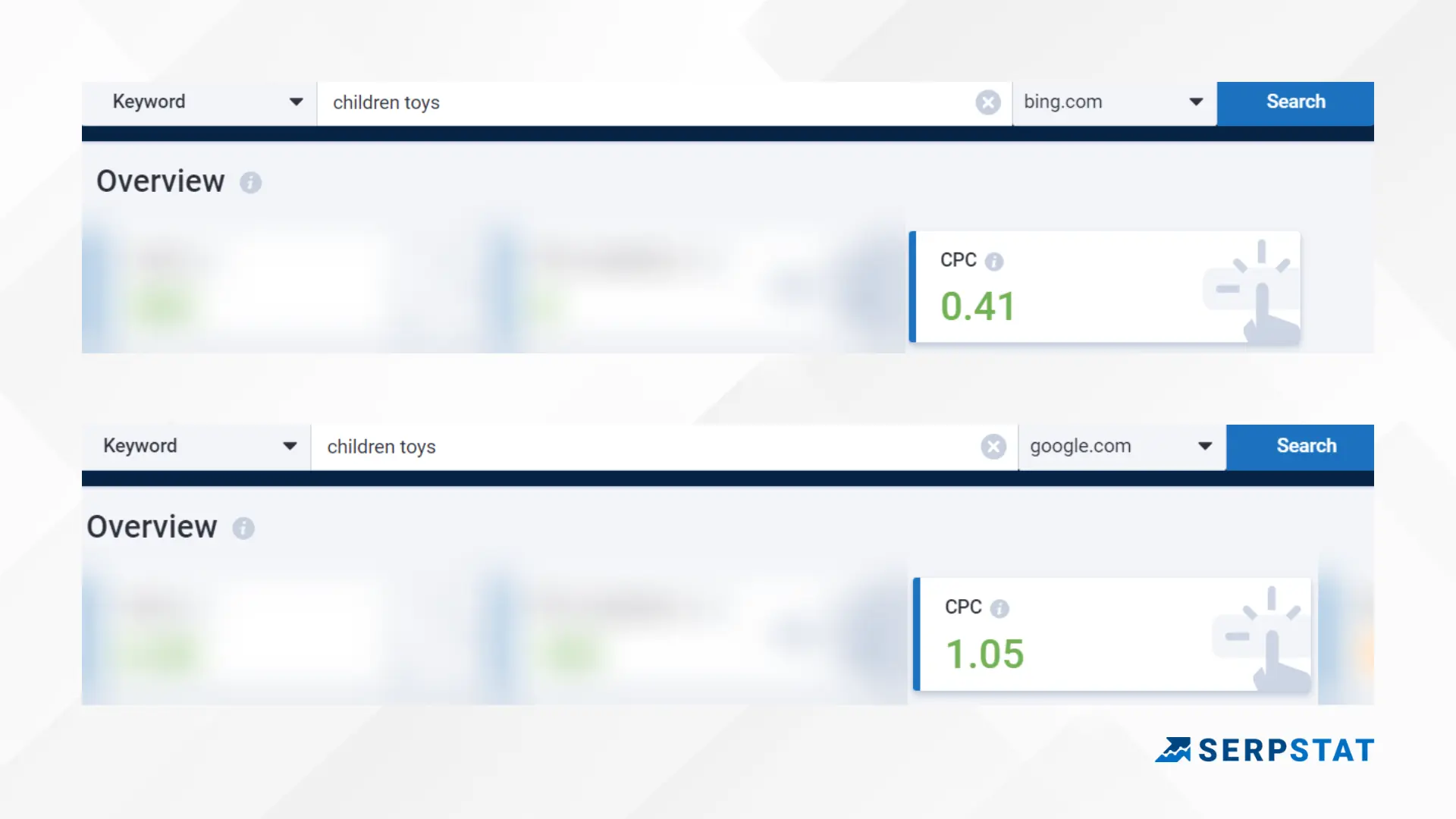


![YMYL Websites: SEO & EEAT Tips [Lumar Podcast] YMYL Websites: SEO & EEAT Tips [Lumar Podcast]](https://www.lumar.io/wp-content/uploads/2024/11/thumb-Lumar-HFD-Podcast-Episode-6-YMYL-Websites-SEO-EEAT-blue-1024x503.png)
